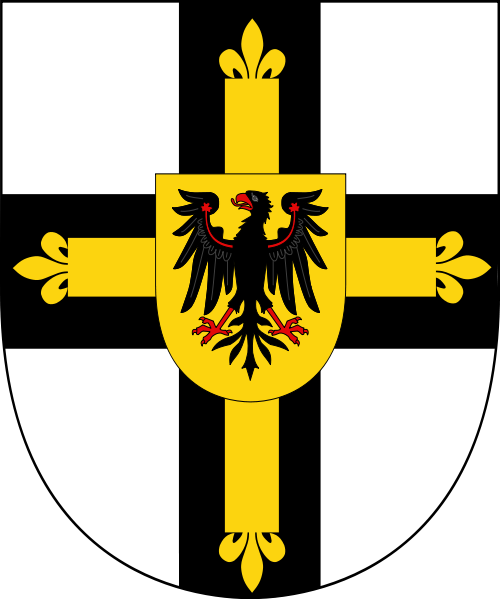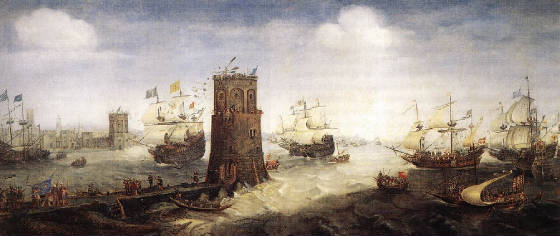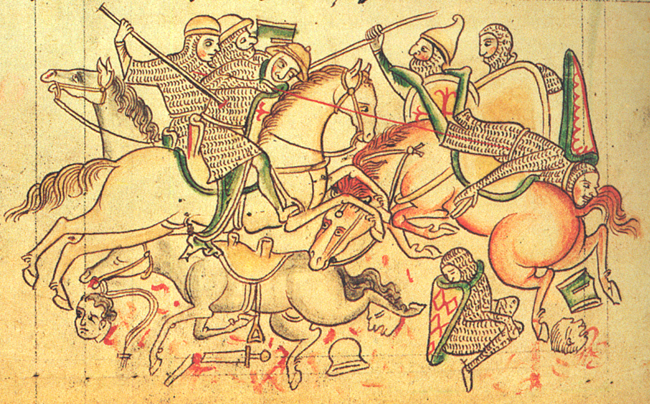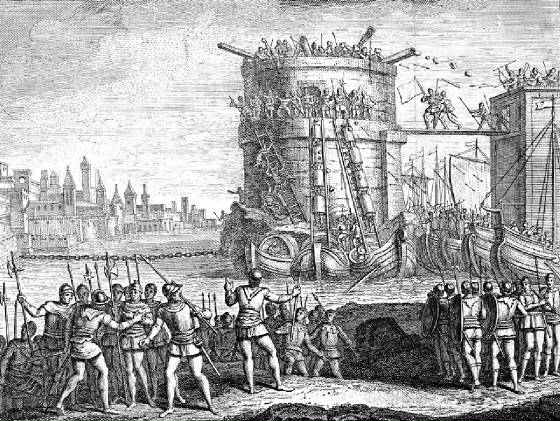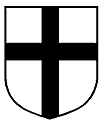 |
|
The Seige of Damietta - 1218-1219 The Siege of Damietta of 1218–1219 was part of the Fifth Crusade in which the Crusaders attacked the Egyptian port city of Damietta. The city, under the control of the Ayyubid sultan al-Kamil, was besieged in 1218 and taken by the Crusaders in 1219. At the beginning of the Fifth Crusade, it was agreed that a force would attempt to take Damietta, located at the mouth of the river Nile. The Crusaders then planned to use this city as a launching point for the southern portion of a pincer attack upon Jerusalem from Acre and Suez. Control over the area would also provide wealth to finance the continuation of the crusade, and reduce the threat from the Muslim fleet. In March 1218, the Crusader ships of the Fifth Crusade set sail to the port of Acre. In late May, the forces assigned to besiege Damietta set sail. The first ships arrived on May 27th, although the main leaders were delayed by storms and further preparations. The crusading force included a group of Knights Templar, Knights Hospitaller, fleets from Frisia and Italy, and troops amassed under numerous other military leaders. Upon the arrival of the first Crusader ships to Damietta, Simon III, Count of Saarbrücken was chosen as a temporary leader until the arrival of the remaining ships. Under his command, the force established a landing site on May 29th "without any loss of blood." Later that day, the remaining ships arrived.
The Tower of Damietta The first objective of the Crusaders was to take the defensive river tower that protected the fortress of Damietta and anchored one end of a chain across the harbor. However, the approaches to the tower were limited by the large iron chain to the east, and the shallow depth of the river to the west. Assaults upon the tower began on June 24th, but they repeatedly failed. As a result, the Crusaders created a new type of naval siege weaponry, sometimes attributed to the chronicler Oliver of Paderborn; two ships were bound together, and four masts and sailyards were built, with a siege tower and ladder constructed on top. The structure was then covered with a layer of animal skins to protect from enemy attacks. On August 24th, the engine was brought to the tower; the next day, the men in the tower surrendered. The use of this remarkable siege engine aided the Crusaders in taking the tower, and opening the way for the fleet to attack the fortress.
The City of Damietta The city of Damietta was well-fortified, with 3 walls, 28 towers, and a moat. Once the river tower was captured, the Crusader fleet attempted to support the land forces with an attack on the city from the river. However, Al-Kamil blocked the river with sunken ships, and the crusaders had to spend time clearing out an old canal so that their ships could surround the city. The siege was further stagnated by the arrival of winter, storms, disease, and leadership disputes. In September, Cardinal Pelagius, Bishop of Albano and Legate of the Apostolic See arrived at the Crusader camp and proceeded to challenge the command of John of Brienne, King of Jerusalem, claiming that the Church held greater authority than a secular leader. To add to their difficulties, in late November 1218, a storm wrecked several of the Crusader ships and destroyed supplies. However, on February 25, 1219, the Crusaders received welcome news. The Sultan Al-Kamil had retreated, leaving the river bank near the city unoccupied by hostile forces. The Crusaders quickly advanced, and spent the spring and summer fighting the Muslim troops with varying success. On August 29, the Crusaders attempted a large-scale attack on the enemy camp, but they quickly became disorganized and the Sultan's counterattack was fairly successful. Soon after, a temporary truce was established, and peace terms were offered by the Sultan. The terms were highly favorable to the Crusaders; the Muslim leaders had agreed to surrender the city and kingdom of Jerusalem, the Holy Cross, and all Christian captives in Egypt and Damascus, only withholding the fortresses of Kerak and Montreal. They even agreed to supply funds to repair Jerusalem's walls. King John advocated for accepting the peace terms, backed by the French and German troops. On the other hand, Cardinal Pelagius, backed by the Templars, Hospitallers, and Italians, opposed it. Eventually, the terms were denied, and the fighting continued. In early November 1219, the Crusaders found the city of Damietta nearly unguarded. Upon entering the walls, they found that the town had been devastated by the lack of supplies and disease. The exact numbers are unclear, but out of the 80,000–60,000 inhabitants prior to the beginning of the siege, less than 10,000 remained alive; some sources recount as few as 3,000 left.
Aftermath The city of Damietta was held by Crusader forces for another two years after the completion of the siege. During that time, the mosque of Damietta was converted into a cathedral. On February 2, 1220, the Feast of the Purification, Cardinal Pelagius consecrated the building as the Cathedral of the Holy Virgin. In July 1221, Damietta and the Fifth Crusade were lost. Crusader forces surrendered the city and evacuated Egypt.
List of Crusaders Present:
|

